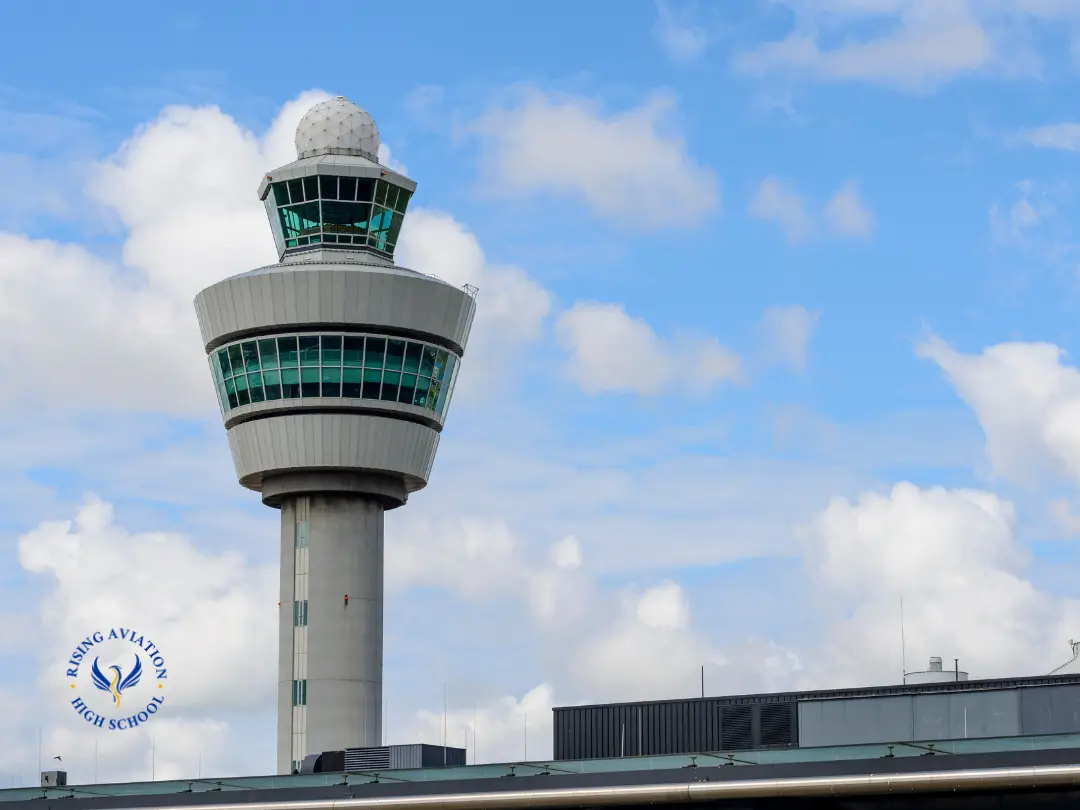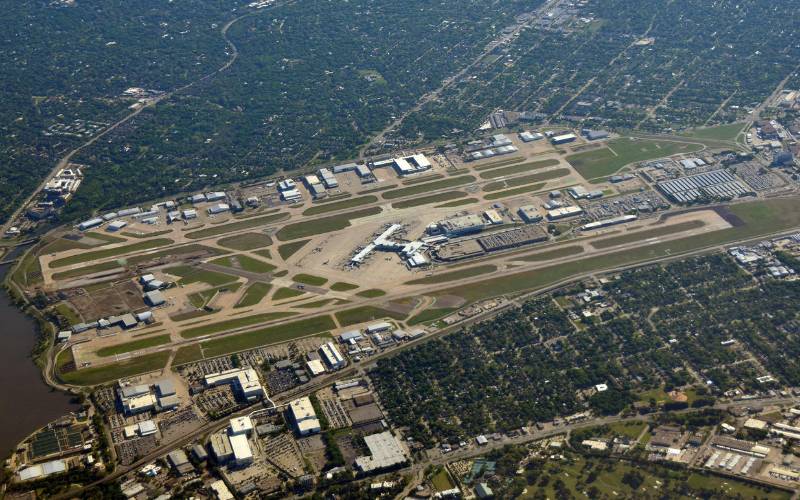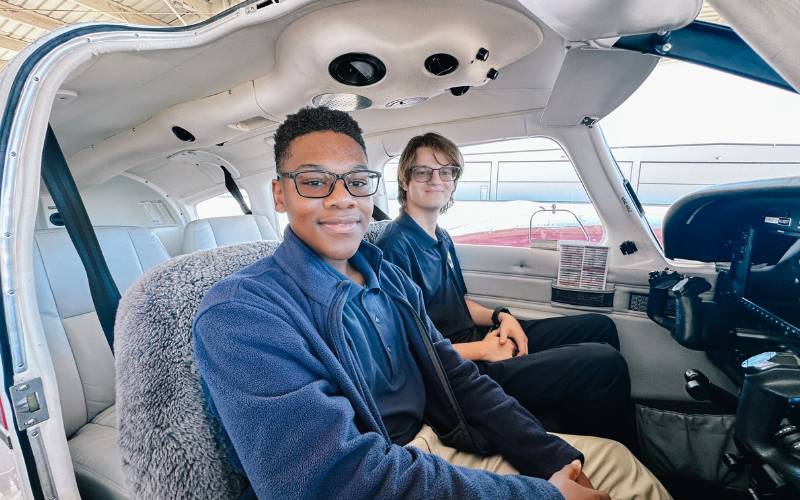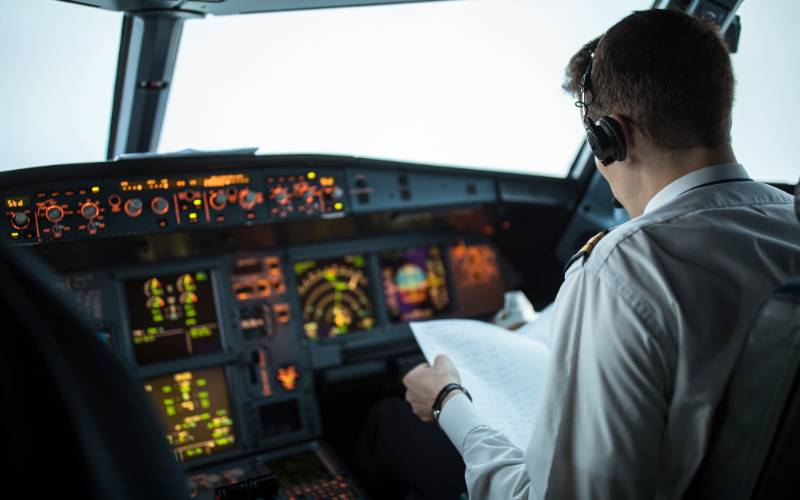As defined by the Bureau of Labor Statistics, air traffic controllers (ATCs) “manage the flow of aircraft into and out of the airport airspace, guide pilots during takeoff and landing, and monitor aircraft as they travel through the skies.”
But what exactly does this job entail on a daily basis and how do you become an air traffic controller? And perhaps most importantly, is becoming an ATC the best aviation career for YOU? As a leading DFW STEM school, today, we’ll answer some of these questions so you’ll have a greater understanding of this essential occupation.
What do air traffic controllers do?
We’ve already given a broad definition of what an ATC does but the job actually involves more than you might think. First, it’s important to understand that the ultimate goal of an air traffic controller is to promote and maintain the safety of everyone involved – pilots, passengers, airline personnel, airport staff, and countless others. While doing so, they may also help prevent delays by keeping flights running smoothly.
Here are some of the typical everyday tasks that air traffic controllers perform:
- Observe and guide the movements of aircraft both in flight and on the ground.
- Manage airport runway and taxiway ground traffic so it runs smoothly and safely.
- Provide detailed instructions to pilots for takeoff and landing.
- Keep pilots informed of vital information such as weather conditions or runway closures that affect flight safety and operation.
- Hand over control of outgoing flights to other air traffic controllers and assume control over incoming flights.
What is the work environment like for air traffic controllers?
The vast majority of ATCs are employees of the Federal Aviation Administration (FAA). As such, their typical workplace includes airport control towers or en route centers located throughout the country. Although many major airports are operational 24 hours a day, the work day for air traffic controllers is limited to a maximum of 10 consecutive work hours, including breaks. Plus, they must have at least 9 hours of rest between shifts.
Monitoring and managing a vast number of aircraft can often be a stressful job, especially when weather conditions or other hazards come into play. The high intensity and stress level of the job is the biggest factor behind work day limitations. It’s also the impetus behind the FAA rule that requires ATCs to retire at age 56.
How can you become an air traffic controller?
Many aviation careers require specialized training, a college degree, or certain certifications from the Federal Aviation Administration. For ATCs, the requirements are many.
To become an air traffic controller, a candidate must meet these criteria, among others:
- Be a U.S. citizen
- Earn an associate’s or bachelor’s degree from an FAA-approved Air Traffic Collegiate Training Initiative program
- Pass a medical exam and background check
- Pass FAA pre-employment tests
- Complete training at the FAA Academy
- Complete on-the-job training that can last 12 months or more
- Pass a yearly physical exam and routine drug tests
Much of the training that controllers go through is rigorous, and for good reason. Since their performance affects the lives of many people, it’s important that ATCs have excellent communication and decision making skills, be detail oriented, and be able to work collaboratively with other team members.
What is the pay like for ATCs and how is the job outlook for 2023 and beyond?
According to the U.S. Bureau of Labor Statistics, the 2021 median annual wage for air traffic controllers working for the federal government was $137,380. Like many other careers, overall pay depends on a variety of factors, including geographical location, the employee’s level of training, and the complexity of the flight paths managed.
In addition, the Bureau doesn’t anticipate a significant increase in the number of ATCs required during the time period of 2021-2031. Part of this stems from the fact that controllers are required to retire at age 56. So, as vacancies are created due to burn-out or retirement, they’re filled with new recruits but the overall number of positions changes very little.
Aviation High School and Training for Teens in the Dallas Area
For many individuals, the love of aviation starts at a young age. That’s certainly been our experience here at Rising Aviation High School in Addison, TX. Our private high school located at the Addison Airport (KADS) is geared specifically toward Dallas area teens who are budding aviators and aviation enthusiasts.
Our exclusive location gives students a close-up view of everyday airport operations and significant insight into a variety of aviation related careers. While many of our students get their private pilot’s license and envision a future career with the airline industry, others are interested in becoming a drone pilot, an aerospace engineer, or even an air traffic controller.
Students at Rising Aviation High School graduate with an accredited high school diploma with a STEM endorsement. This gives them the perfect stepping-off point for pursuing further education, military opportunities, or other training for aviation related occupations. Contact us today to learn more about our academic and aviation programs for teens in the Dallas-Fort Worth area.






